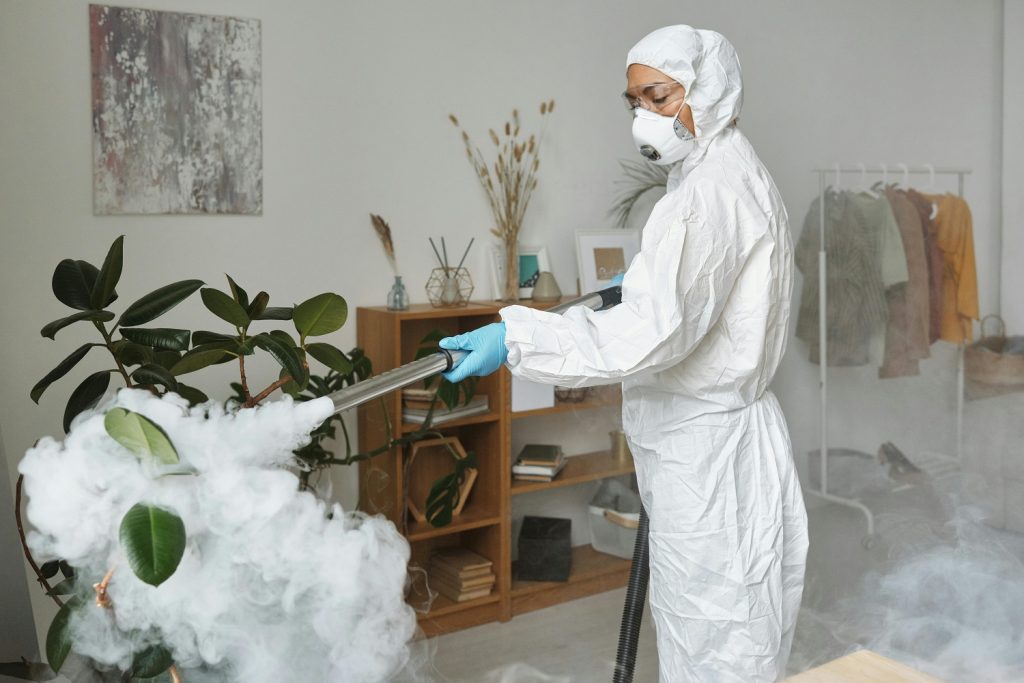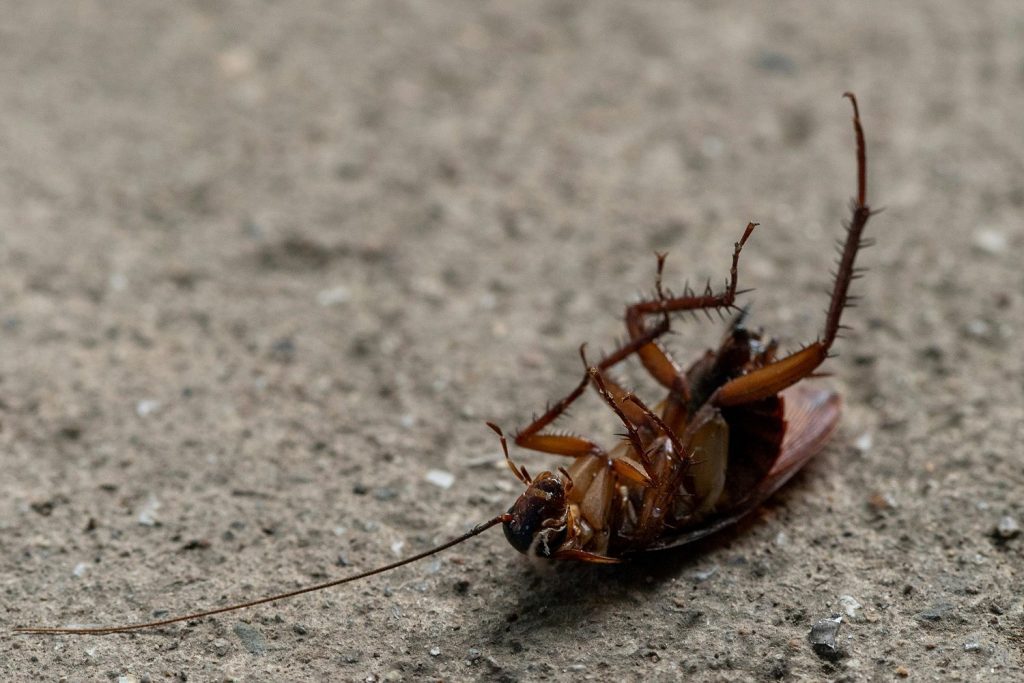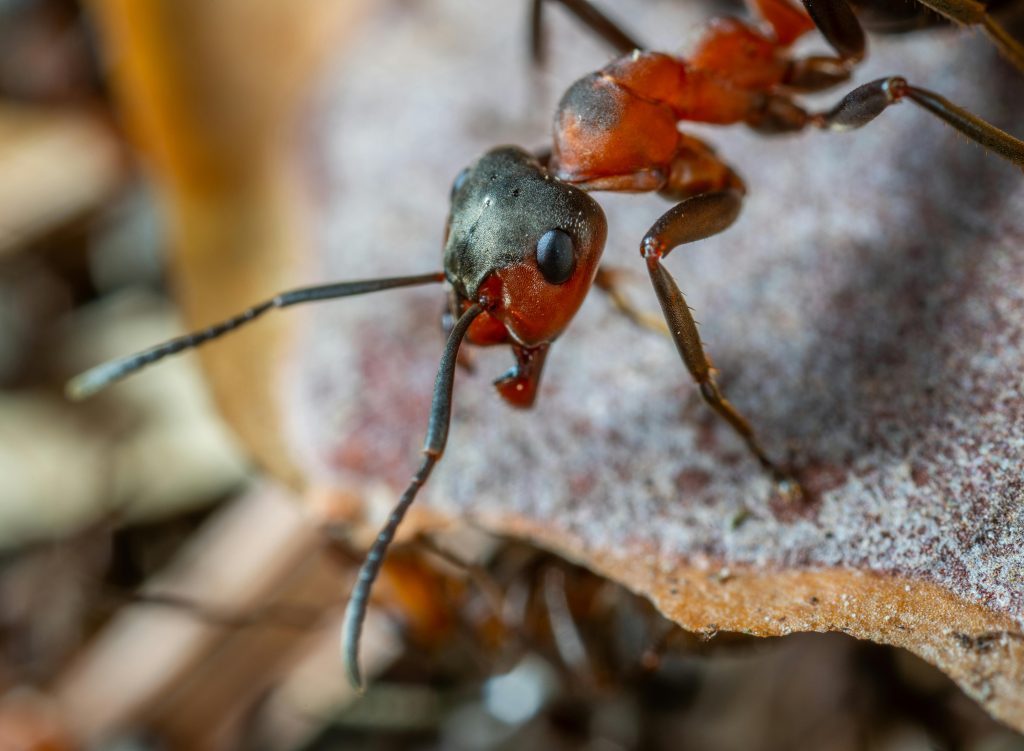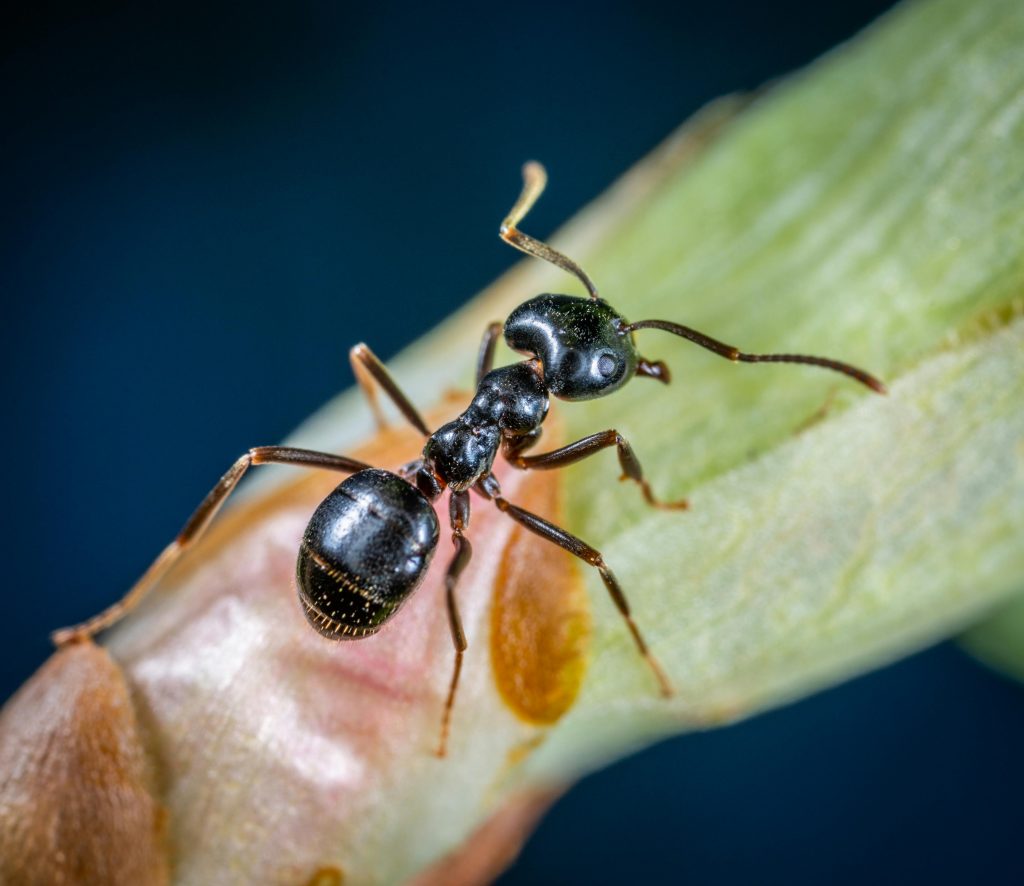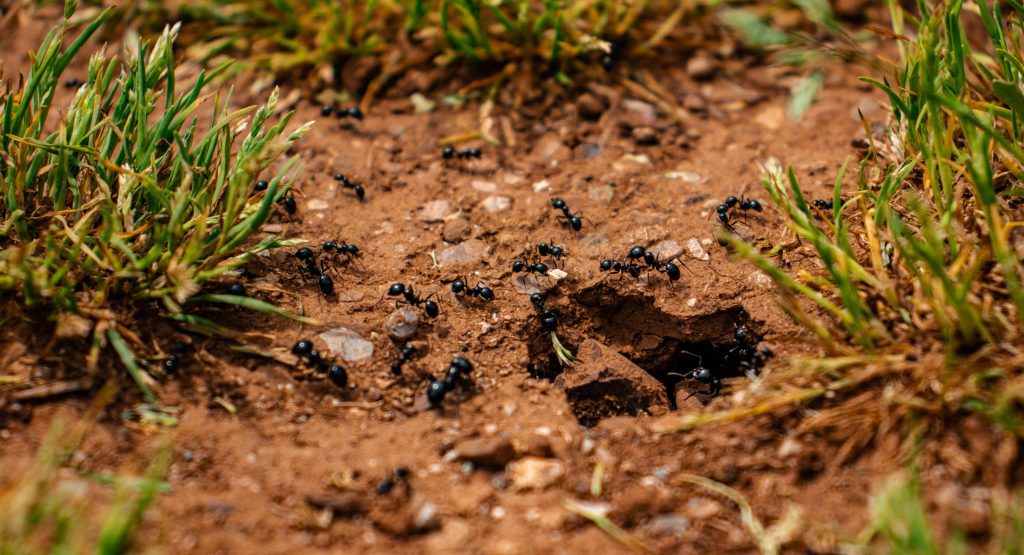What Happens After Cockroach Fumigation: A Guide to What You Can Expect
Cockroach infestations are not only unsettling but also a health hazard for homes and businesses. These pests multiply rapidly, contaminate food, and spread diseases. When infestations become severe, fumigation is often the most effective solution. But what happens after cockroach fumigation? Understanding the aftermath is crucial for ensuring the treatment’s effectiveness and preventing reinfestation.
This guide provides step-by-step advice on what to expect, actionable tips for post-treatment care, and expert insights to keep your property pest-free.
Is Fumigation Effective for Cockroach Infestations?
Fumigation is highly effective for addressing severe cockroach infestations. It works by penetrating deep into cracks, crevices, and other hiding spots where traditional sprays or baits fail. This method targets live cockroaches and often their eggs, ensuring widespread elimination.
Factors That Impact Fumigation Success
- Severity of the infestation: Larger infestations may require follow-up treatments.
- Quality of the treatment: Professional-grade chemicals and expertise play a critical role.
- Post-treatment actions: Homeowners must maintain cleanliness and block entry points to prevent reinfestation.
For reliable fumigation services, explore Conquer Pest’s cockroach fumigation solutions.
Do Roaches Get Worse After Fumigation?
It’s common to see increased cockroach activity immediately after fumigation. This happens because:
- The chemicals drive cockroaches out of their hiding spots.
- Some cockroaches may behave erratically before succumbing to the treatment.
This heightened activity is temporary and indicates that the fumigation is working. Within a week or two, their numbers will significantly decrease.
Why Do I Still See Cockroaches After Fumigation?
Even after professional fumigation, you might still spot cockroaches for several reasons:
1. Chemical Effects Take Time: Fumigants may take days or weeks to reach all cockroach hiding places.
2. Resistant Cockroach Eggs: Cockroach eggs are particularly resilient. They may hatch post-treatment, requiring follow-up actions.
3. Reinfestation from External Sources: Untreated neighboring areas can act as a source of reinfestation. Seal gaps and cracks to minimize this risk.
What Should You Expect After Cockroach Fumigation?
Here’s what typically happens after fumigation:
- Dead Cockroaches: You’ll find dead cockroaches in various parts of your property. Dispose of them promptly.
- Reduced Activity: Live cockroach sightings will decrease significantly over 1–2 weeks.
- Lingering Odors: The chemical smell from fumigation may persist temporarily. Ventilate the space to clear the air.
- Follow-Up Actions: Severe infestations often require additional treatments or inspections.
Post-Fumigation Steps to Take
To maximize the effectiveness of fumigation, follow these essential steps:
1. Follow Professional Instructions: Your pest control provider will give you specific guidelines for post-treatment care.
2. Wait Before Cleaning: Avoid cleaning treated areas for 24–48 hours to allow the chemicals to work fully.
3. Seal Entry Points: Use caulk or weather-stripping to seal cracks, gaps, and crevices around doors, windows, and plumbing.
4. Maintain Cleanliness:
- Remove crumbs and food debris regularly.
- Store food in airtight containers.
- Empty trash bins frequently.
5. Restrict Water Sources: Fix leaking pipes and avoid leaving standing water in sinks or bathrooms.
6. Schedule Follow-Ups: For severe infestations, follow-up treatments are often necessary. Contact Conquer Pest for advice.
What Not to Do After Cockroach Fumigation
Avoid these mistakes to ensure the treatment remains effective:
- Don’t Clean Immediately: Wait for the recommended time to avoid disrupting the chemical treatment.
- Don’t Block Ventilation: Keep windows and vents open to clear any residual fumes.
- Don’t Ignore Signs of Reinfestation: Act promptly if you notice new droppings, egg cases, or live cockroaches.
- Don’t Skip Follow-Ups: Follow-up treatments and inspections are key to long-term pest control.
How Soon Can You Clean After Cockroach Fumigation?
Timeline for Cleaning
- 24–48 Hours Post-Treatment: Avoid cleaning treated areas.
- Light Cleaning: Wipe high-contact surfaces like counters after the waiting period.
- Deep Cleaning: Perform deep cleaning, such as mopping floors, a week later or as advised by your pest control provider.
What If Cockroaches Persist After Treatment?
If cockroaches continue to appear after fumigation:
- Contact Your Exterminator: Report the issue for further evaluation.
- Inspect for Entry Points: Reinfestation often occurs through cracks or gaps in walls or windows.
- Schedule Follow-Up Treatments: Persistent infestations may require multiple treatments for complete eradication.
Learn more about pest control solutions here.
Preventing Future Cockroach Infestations
Maintaining a cockroach-free environment requires ongoing vigilance. Here’s how you can prevent future infestations:
- Regular Inspections: Look for droppings, egg cases, or other signs of activity.
- Professional Services: Schedule routine pest control visits to catch small issues before they escalate.
- Educate Yourself: Stay informed about cockroach behavior and prevention strategies.
Explore pest prevention tips here.
Conclusion
Fumigation is a powerful tool for eliminating cockroach infestations, but the aftermath requires careful attention to ensure lasting results. By understanding what to expect, following professional advice, and taking proactive steps, you can maintain a pest-free property.
If you’re dealing with a cockroach problem or need expert guidance, contact Conquer Pest today.
Enjoy peace of mind knowing your home or business is safe, clean, and free from cockroaches!
Frequently Asked Questions
Q: How long will cockroaches remain visible after fumigation?
Cockroaches may be visible for up to two weeks as the chemicals take effect.
Q: Can fumigation eliminate cockroach eggs?
While fumigation can affect some eggs, others may hatch post-treatment, requiring follow-ups.
Q: Are there alternatives to fumigation for cockroach control?
Yes, methods like baiting, trapping, and targeted spraying can be effective for smaller infestations.
Q: Is it safe to stay at home during cockroach fumigation?
Most fumigation treatments require you to vacate the premises for several hours or even a day, depending on the chemicals used. Always follow the exterminator’s guidelines for re-entry to ensure your safety.
Q: Can I use DIY fumigation products instead of hiring professionals?
DIY products may work for small infestations but are typically less effective for severe cases. Professional fumigation ensures thorough treatment with specialized chemicals that target hidden cockroach populations and eggs.
Q: Why is it important to seal cracks and gaps after fumigation?
Cockroaches can enter your property through tiny openings in walls, floors, and plumbing. Sealing these entry points prevents reinfestation and enhances the long-term success of the treatment.
Q: How can I protect my food and belongings during fumigation?
Before fumigation, store all food items in airtight containers or remove them from the premises. Cover or remove sensitive items like electronics, plants, and pet supplies as directed by your exterminator.
Q: Are the chemicals used in fumigation harmful to pets?
Yes, fumigation chemicals can be harmful to pets. Always remove pets, including aquariums and cages, from the premises before treatment. Wait for the recommended re-entry time to ensure safety.
Q: What should I do if cockroach eggs hatch after fumigation?
Cockroach eggs are resistant to many treatments and may hatch after fumigation. Contact your exterminator to schedule a follow-up treatment and clean your home thoroughly to remove newly hatched cockroaches.
Q: Can cockroaches return after fumigation?
Yes, cockroaches can return if neighboring infestations are not addressed or if entry points remain unsealed. Maintaining cleanliness and scheduling routine inspections are key to preventing their return.
Q: How do I know if fumigation was successful?
Signs of a successful fumigation include finding dead cockroaches, reduced sightings of live cockroaches over time, and no signs of droppings or egg casings. Persistent issues may indicate the need for additional treatments.
Q: What is the best long-term strategy for cockroach prevention?
The best long-term strategies include:
- Sealing entry points.
- Maintaining a clean environment free of food crumbs and standing water.
- Scheduling routine pest control services.
Most Common Ant Species in Singapore: Identification, Prevention, and Control Tips
Introduction
Ants are among the most common pests found in Singapore’s residential and commercial spaces. With Singapore’s warm, humid climate, ants thrive year-round, making ant infestations a frequent issue for property owners. Given the risks of contamination, structural damage, and rapid spread, identifying ant species and taking early control measures is essential.
This article explores the most common ant species in Singapore, detailing their characteristics, habits, and the best strategies for preventing and managing infestations. Understanding these details will help property owners protect their spaces more effectively and reduce the need for costly pest control interventions.
Why Ant Infestations Are Common in Singapore
Singapore’s tropical climate, marked by warmth and high humidity, provides ideal conditions for ants to flourish. Additionally, the country’s busy trade environment has led to the unintentional import of various foreign ant species, further contributing to the local diversity of ant types.
- Climate Factor: Singapore’s climate creates an environment where ants can thrive year-round. Moisture and warmth, in particular, attract ants and encourage rapid population growth.
- Trade and Imported Goods: Increased trade activity has brought foreign species into Singapore, adding to the already high number of native ant types. This constant influx raises the likelihood of new infestations.
- Adaptability: Many ant species can survive in both residential and commercial properties, especially those with access to food and water sources. Ants are highly adaptable, which makes managing their spread more challenging.
Signs of an Ant Infestation
Early detection of an ant infestation can prevent a small issue from turning into a major problem. Property owners should look out for the following signs:
- Presence of Ant Trails: Ants often travel in trails, moving back and forth from their nests to food sources. Seeing a line of ants in kitchens, pantries, or other areas with food is a clear indicator of an infestation.
- Nesting Sites: Ants often nest in moist, hidden places such as wall crevices, under sinks, behind appliances, or inside wooden structures. Spotting a nest or discarded wings could mean there’s a colony nearby.
- Damage to Wooden Structures: While ants don’t eat wood like termites, some species, such as carpenter ants, hollow out wood to build their nests. This can lead to structural issues over time.
Identifying an infestation early allows property owners to address the problem effectively, either through DIY methods or by contacting pest control professionals.
1. Ghost Ants (Tapinoma melanocephalum)
Ghost ants, also known as “sugar ants,” are one of the most common ant species in Singapore, and they are a leading cause of household infestations. These ants prefer moist environments, often making their nests in kitchens, bathrooms, and other damp areas. Ghost ants are highly attracted to sweet foods, as carbohydrates are essential to their diet.
Key Characteristics of Ghost Ants:
- Physical Appearance: Ghost ants are tiny, measuring between 1.3 to 1.5 mm in length. They have dark heads with pale, translucent bodies, making them easy to identify.
- Behavior: They typically move in trails and are known to nest in cabinets, under sinks, and even inside wall cavities.
- Diet: Ghost ants are attracted to sweet foods and liquids and are often found near sugar sources or food storage areas.
Challenges in Controlling Ghost Ants: Ghost ants can multiply quickly, and because of their size and mobility, they are challenging to eradicate without professional pest control methods. They tend to scatter when disturbed, making it difficult to fully eliminate them without a targeted approach.
2. Odorous House Ants (Tapinoma sessile)
Odorous house ants, another common ant species in Singapore, get their name from the distinct, coconut-like smell they release when crushed. These ants prefer moist areas, especially during dry spells, and are commonly found near sources of food, such as kitchens, pet food dishes, and indoor plants.
Key Characteristics of Odorous House Ants:
- Physical Appearance: They are generally brown or black and measure between 1.6 to 3.1 mm in length. Their antennae have 12 segments, making them distinct from other ants.
- Behavior: Odorous house ants are highly adaptable and can nest in various areas, including toilet lids, flowerpots, and other damp environments.
- Diet: They consume a wide range of foods, from sweet foods like fruits to oily or protein-based items, and will even eat pet food.
Impact on Property Owners: These ants can spread quickly within properties, especially if there is abundant food and water. They may contaminate food and surfaces, posing a hygiene concern for homes and businesses.
3. Pharaoh Ants (Monomorium pharaonis)
Pharaoh ants are particularly notorious for their resilience and difficulty to control. Known for their ability to form multiple colonies, these ants can become a persistent issue in homes and businesses if not managed correctly. Pharaoh ants are known to bite when threatened and pose a greater challenge due to their nesting and breeding habits.
Key Characteristics of Pharaoh Ants:
- Physical Appearance: These ants are usually golden or light brown and measure about 2 mm in length. Pharaoh ants have multiple queens in a colony, with some queens living up to 12 years.
- Behavior: Pharaoh ants tend to scatter and establish new colonies when threatened, making them hard to eradicate completely.
- Diet: Pharaoh ants prefer oily and protein-rich foods, but they can consume a wide variety of substances, including dead insects.
Challenges in Control: Pharaoh ants require specific pest control methods. Traditional DIY pest control can often backfire by causing the ants to spread into new colonies. Professional pest management is typically recommended to effectively handle these pests due to their complex colony structure.
4. Carpenter Ants (Camponotus spp.)
Carpenter ants are one of the most recognizable ant species in Singapore, known for their wood-boring behavior. While they do not consume wood like termites, they excavate it to create nests, which can lead to structural damage over time. Carpenter ants thrive in moist, decaying wood, making them common in damp areas of properties.
Key Characteristics of Carpenter Ants:
- Physical Appearance: Carpenter ants are generally larger than other species, measuring between 15 to 17 mm in length. They are typically black or a reddish-brown color.
- Behavior: They prefer to nest in wood, especially in moist environments like kitchens, bathrooms, and basements.
- Diet: These ants are omnivores, feeding on dead insects and sweet substances like honeydew from other insects.
Potential for Structural Damage: Carpenter ants can weaken wooden structures over time. Their nests in wooden beams, furniture, or structural components can compromise the integrity of a building, making early detection and removal essential for property owners.
5. Crazy Ants (Paratrechina longicornis)
Crazy ants are named for their erratic, rapid movement patterns, which set them apart from other ant species. These ants are highly adaptable and are commonly found in various locations, from kitchens to outdoor spaces. Their adaptability, combined with their tendency to scatter when disturbed, makes them challenging to control.
Key Characteristics of Crazy Ants:
- Physical Appearance: Crazy ants are usually dark brown to black and measure around 2 to 3 mm in length. They have long legs and antennae, which make them highly mobile.
- Behavior: These ants are known for their “crazy” movement patterns and can quickly spread to new areas if disturbed.
- Diet: Crazy ants are omnivorous and feed on a wide variety of foods, though they are particularly attracted to sweets.
Difficulty in Control: Crazy ants can spread rapidly within a property, and traditional pest control methods can often cause them to scatter further. Targeted treatment by pest control professionals is usually required to eliminate them effectively.
Importance of Proper Identification for Ant Control
Correctly identifying the species of ant present in a property is crucial for effective ant pest control. Each ant species has unique behaviors, food preferences, and nesting habits that require different treatment approaches. Misidentifying an ant species can lead to ineffective control efforts, allowing the infestation to spread or worsen.
Reasons Why Proper Identification Matters:
- Different Control Methods: Some ants, like Pharaoh ants, tend to scatter and form new colonies when disturbed, making them harder to control with typical methods. Targeted solutions are needed for each species.
- Potential Health and Structural Risks: Certain ants, such as carpenter ants, pose a structural risk, while others, like Pharaoh ants, may bite if threatened. Identifying the species helps prioritize the correct response.
Avoiding Ineffective DIY Solutions: DIY pest control can sometimes backfire by worsening the infestation. Professional pest controllers can accurately identify ant species and apply effective treatments, preventing the infestation from spreading.
Methods to Prevent Ant Infestations
Preventing an ant infestation starts with keeping living spaces clean and reducing the factors that attract ants, such as food sources and moisture. Here are some effective preventive steps to reduce the risk of ant infestations:
- Proper Food Storage: Store food in sealed containers and avoid leaving food out overnight. Even crumbs or spills can attract ants.
- Cleanliness and Waste Management: Regularly clean kitchen surfaces, floors, and other areas where food is handled. Ensure that trash bins are covered and emptied frequently to prevent ants from gathering.
- Moisture Control: Repair any leaks and ensure that sinks, bathrooms, and other moist areas are well-ventilated. Many ant species are attracted to damp spaces.
- Seal Entry Points: Ants often enter through cracks, holes, or gaps in walls, doors, and windows. Sealing these entry points can help keep ants from entering.
By taking these measures, property owners can significantly reduce the likelihood of an infestation, protecting their homes and businesses from potential damage.
When to Seek Professional Help
While minor ant issues can sometimes be managed with DIY methods, persistent or large-scale infestations typically require professional intervention. Here are some signs that indicate it may be time to contact a pest control service:
- Repeated Infestations: If ants keep returning despite DIY efforts, a professional pest control company can provide targeted treatments that address the root cause.
- Presence of Multiple Colonies: Species like Pharaoh ants can establish multiple colonies, making DIY methods ineffective. Professionals have the knowledge and tools to eliminate these colonies effectively.
- Structural Damage: Signs of structural damage, such as hollowed-out wood, may indicate carpenter ants or other destructive species. Professional treatment can prevent further damage.
- Health and Safety Concerns: Ants that bite or spread bacteria can pose health risks, especially in commercial kitchens or hospitals. A licensed pest control team can handle infestations safely and effectively.
Professional pest control services in Singapore can also provide eco-friendly solutions to minimize environmental impact, which is an added benefit for those seeking sustainable pest management.
Environmental Impact of Pest Control
When it comes to ant control, considering the environmental impact is essential. Singapore’s biodiversity is unique, and using eco-friendly pest control methods can help protect local ecosystems from harm. Many professional pest control companies in Singapore now offer environmentally responsible solutions that minimize chemical use and prioritize non-toxic treatments.
Eco-Friendly Pest Control Options:
- Non-Toxic Baits and Traps: These methods target ants without harming other wildlife. Non-toxic baits are especially effective for species like Pharaoh ants and odorous house ants.
- Natural Repellents: Essential oils, vinegar, and other natural repellents are effective for deterring certain ant species while being safer for the environment.
- Integrated Pest Management (IPM): IPM combines multiple techniques, focusing on prevention, monitoring, and targeted treatment. This approach minimizes chemical use, making it a sustainable pest control choice.
Choosing eco-friendly pest management solutions not only helps control ant infestations effectively but also contributes to the conservation of Singapore’s natural habitats.
Conclusion
Ant infestations are a common issue for property owners in Singapore, where the warm, humid climate encourages ant populations to thrive. By identifying the most common ant species, such as ghost ants, odorous house ants, and carpenter ants, and understanding their habits, property owners can better prevent and manage infestations. Simple preventive steps, like maintaining cleanliness, sealing entry points, and reducing moisture, can go a long way in keeping ants out of homes and businesses.
In cases of persistent infestations or complex ant species like Pharaoh ants and carpenter ants, seeking help from professional pest control companies is recommended. By using eco-friendly pest control options, property owners can protect both their properties and the environment. Early action and knowledge of Singapore’s most common ant species are key to effectively managing ant issues.
Frequently Asked Questions (FAQs)
1. What attracts ants to Singaporean homes?
Ants are attracted to food, especially sugary and greasy items, and to moisture-rich areas like kitchens and bathrooms. They enter homes searching for these resources and can set up colonies nearby if conditions are favorable.
2. Are DIY pest control methods effective against ants?
DIY pest control methods can help reduce ant activity but are often less effective for complete extermination, especially for species like Pharaoh ants that spread quickly. For long-term control, professional treatment is recommended.
3. How do I know which type of ant is infesting my property?
Identifying ants based on their appearance, behavior, and nesting locations can help. Ghost ants have translucent bodies, Pharaoh ants are golden-brown, and carpenter ants are larger and prefer wood. Professional pest control providers can also assist with identification.
4. Do ants in Singapore pose health risks?
Certain ant species, such as Pharaoh ants, may carry bacteria or bite if threatened, posing minor health risks. However, the primary concern is contamination of food and surfaces, which can lead to hygiene issues.
5. What’s the best way to get rid of ants permanently?
The most effective approach combines prevention, like sealing entry points and keeping areas clean, with professional pest control for lasting results. Eco-friendly treatments are also available to minimize environmental impact.


